Growing mushrooms in the basement
Recently, mushroom growing has become more and more popular. Most people want to grow mushrooms on their own for their own needs or as a small business. And it is worth saying that this is completely simple to do, since mushrooms are quite unpretentious and do not require much effort when growing. If you have a free basement, then this article will focus on growing mushrooms in the basement.
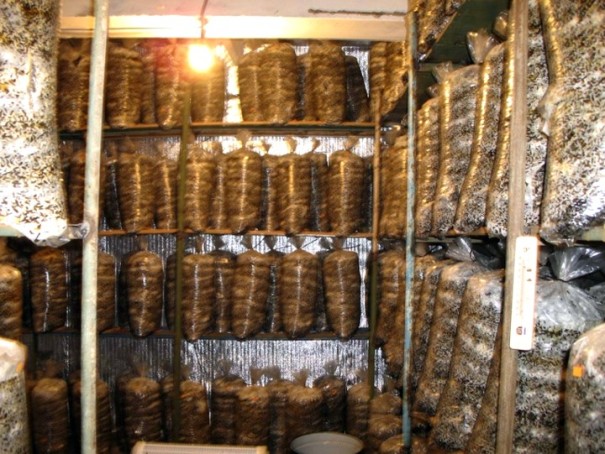
Content
Features of growing mushrooms in the basement, advantages
Growing mushrooms in the basement is the year-round availability of this product, the opportunity to constantly pamper yourself with delicious and fresh mushrooms. In addition, the idea of a mushroom growing business looks very attractive. A business based on home growing mushrooms in the basement is a great option for additional income. A business idea has its advantages, namely:
- mushrooms do not need special attention when growing them, respectively, there is a lot of free time;
- cultivation does not require special knowledge and skills;
- all the materials necessary for cultivation are very simple, they can be obtained at home, and, if necessary, bought ready-made;
- minimum financial investment.
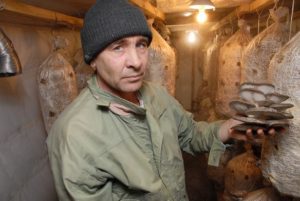
With good results, mushroom growing can grow from a hobby into a main source of income. It is very important to grow a good and high-quality product, to conclude supply contracts with shops, restaurants, canteens.
Cellar varieties
For growing in basement conditions, all the same mushrooms are suitable that are usually grown in large greenhouses and mushroom pickers. You can only grow in the basement oyster mushrooms and Champignon... The latter, in specific cases, will be more whimsical. The thing is that champignons love light, therefore, for their cultivation, you will need powerful lamps of diffused daylight, which should illuminate myceliums 12-13 hours a day. The easiest way is to grow oyster mushrooms in basements - they do not like light, the dampness of the basement and low air temperatures suit them.
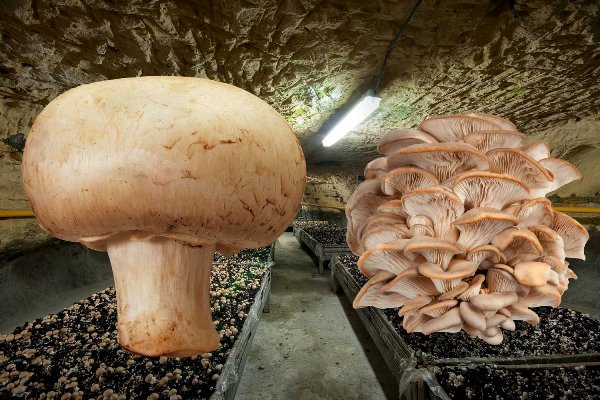
What should be a basement for growing mushrooms
Before starting to grow mushrooms, the cellar must be prepared accordingly. It will not be enough just to plant mycelium in the drawers of the cellar and leave the light on.
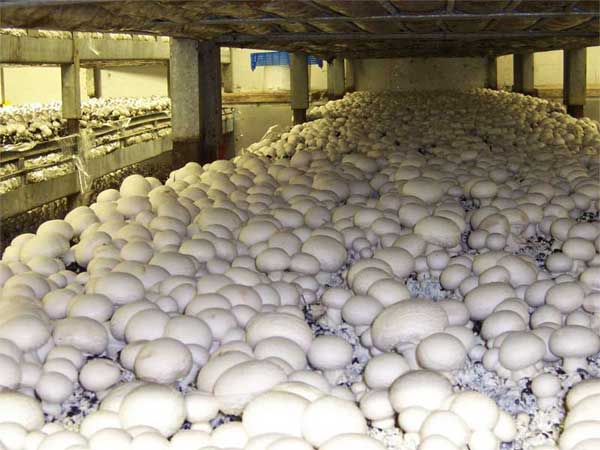
Preparing a cellar for growing mushrooms involves a number of operations, which include:
Lighting... It is worth considering that for the cultivation of each type of mushroom, individual lighting is required. If you are going to grow several types of mushrooms at the same time, the basement will need to be divided into light zones. Champignons love more light than oyster mushrooms. In special gardening stores, you can buy fluorescent lamps for the greenhouse, in which the brightness and sharpness of the lighting will be adjusted.
Ventilation. All mushrooms, without exception, love fresh air. The problem with the cellars is that the air is damp and hot. To avoid the formation of mold and mildew on the walls, it is necessary to install special hoods in the room that will take in bad air and supply fresh air.
Humidity and temperature. Air humidity for growing mushrooms should be 65% - 95%. But with the temperature regime it is a little more complicated. Champignons are more thermophilic, the optimum temperature for growing them is 13 ° - 29 °, while oyster mushrooms feel comfortable at 12 ° - 25 °. Therefore, in order to grow several types of mushrooms at the same time, the room must also be zoned into temperature zones. For heating, it is best to use water systems with a temperature controller. They are easy to install, more economical, and most importantly, they do not dry out the air in the room.
Zoning. As already mentioned, the room is divided into zones according to lighting and temperature conditions. This can be done using ordinary plastic or poly-fiber partitions, which retain moisture and temperature well. It is important, as convenient as possible, to determine the area for growing each type of mushroom.
Disinfection. To avoid the formation of mold, the room must be disinfected. This is best done after all the construction steps, before planting. To do this, use special sulfur checkers with which the room is fumigated. If the basement is old, it is best to spray all surfaces with a formalin solution. In the absence of disinfection, mushroom flies, mites or nematodes can attack the mushrooms, and the crop will be lost. You will have to change the substrate, disinfect the room, and these are additional costs.
Shelving. The best option for the manufacture of shelving is durable plastic. Constant temperature conditions and high strength will quickly render wood and metal unusable, so plastic is an ideal option - it does not rust or rot. In garden centers, you can buy ready-made racks that only need to be assembled indoors.
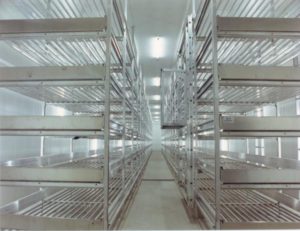
Other equipment. This group includes containers for placing the substrate and planting myceliums. Special underlays for shelvingthat you may need if in the basement not warm enough... Also worth mentioning about watering... It is strictly forbidden to water the mycelium with a direct stream of water - this leads to the debate of the substrate, and the mycelium may die or rot. To do this, use special sprayers (manual and automatic)that irrigate the soil. If the lighting is too bright and difficult to adjust, you may need a special the cloth, which is hung over the shelves to to avoid direct light hitting the formed myceliums.
Video: room for growing oyster mushrooms in the basement
Important! The floor of the room must be concrete. If there is none, it is recommended to make a screed. The earthen floor is a breeding ground for harmful bacteria and parasites that will attack crops. Be sure to cover the walls with a solution of lime and copper sulfate. This additionally protects your plantings from parasites that often grow in mushrooms.
How to grow mushrooms in your basement
For each type of mushroom, individual needs are taken into account when growing, namely air temperature, humidity and lighting. Today, oyster mushrooms are considered the most popular for cultivation, the favorites of all generations are champignons.
Note! Sometimes you can find information on the Internet about growing porcini mushrooms at home in the basement, but this is pure deception, do not see each other.
So, what are the characteristics of growing in the basement for each of these species? Let's try to figure it out.
Champignon
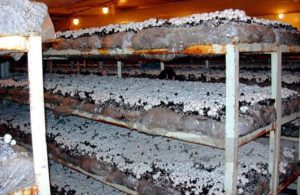
The main task is to prepare a nutrient substrate in which mushrooms will grow. To prepare the substrate, you must use straw, horse or cow dung, urea or ammonium nitrate, gypsum or alabaster, superphosphate and chalk as well as water. Next, mix all the remaining ingredients in certain proportions. A more accurate recipe for preparing a substrate can be found in the article "Growing mushrooms at home"... The compost takes more than 3 weeks to prepare. The finished compost is laid out on racks in a dense layer and left for a day so that it evenly warms up to room temperature, namely: 23 C ° - 25 C °. Next, mycelium is planted in warm soil. It takes about 10 days from disembarkation to the first shoots. The temperature at this time should be at least 28 ° C. After germination, the temperature is lowered by 8 - 10 degrees. The lighting is always kept at the same level (12 hours of light daily). The first crop can be harvested after 14 days from the date of sowing. It is necessary to irrigate myceliums every two days. The fruiting period of champignon myceliums lasts 40 - 45 days.
Video: growing champignons in the basement
Oyster mushrooms
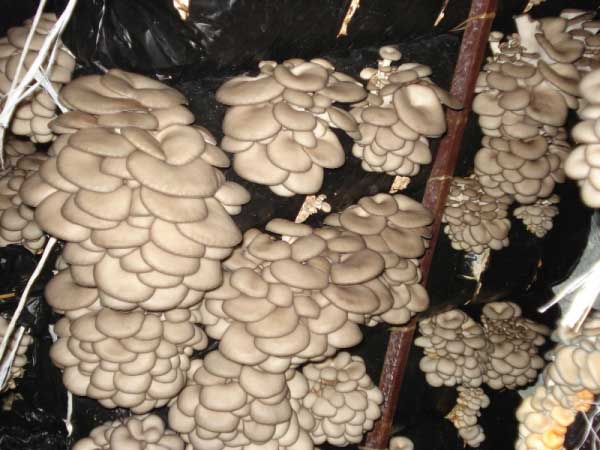
The optimal substrate for growing oyster mushrooms is a wooden bar. This is a very affordable material that you can make yourself. To do this, it is necessary to prepare bars (wooden stumps.) They are partially cleaned of bark, deep cracks are made and soaked in a solution of potassium permanganate. Then the tree becomes infected with mycelium. Any tree will do, except conifers. Most often, shavings or sawdust of deciduous trees, dry straw, husks from seeds and other organic debris are used as a substrate. These are all commercially available at any gardening store. Ready-made substrates can also be purchased there. Next, this substrate is mixed with mycelium and placed in a felt bag, which is hung on a rack. The room temperature must be at least 22 ° C. When the first shoots appear, the temperature is lowered to 13 ° C. Oyster mushrooms are undemanding, and bright lighting is harmful to them, therefore, they must be illuminated with very weak and diffused light for no more than 5 hours a day. Within 10 days after sowing, you can harvest the first crop.The fruiting period of oyster mushrooms is up to two months. More detailed instructions for growing oyster mushrooms you can find in this article.
Video: growing oyster mushrooms in the basement
By the way! The substrate in which the mushrooms grew cannot be reused. It will make an excellent organic fertilizer for flowering plants in your garden or houseplants.
Porcini
This is one of the most demanding mushroom growing you can never grow at homealthough on the internet you will find many articles and videos about successful breeding. Here's one of those instructions.
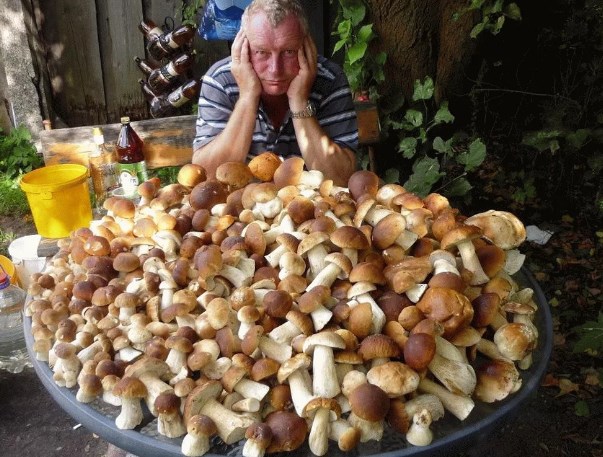
“The substrate for their planting should completely imitate the landscape of their place of birth, namely: forest soil. For this, dry ground twigs, leaves, field grass and dried moss are suitable. The prepared dry substrate is laid out on the racks, in a thick and dense layer. It should be well dried, but in no case ripe or damp. Next, the mycelium is planted and the soil is properly irrigated, after which it is covered with garden paper. Bright light is harmful to mushrooms, therefore, before the first shoots, the paper remains on top. The room temperature should be at 18 ° C. The fruiting period of mushrooms is short - only 30 - 35 days. Porcini mushrooms take a very long time to sprout and take root. From the moment of sowing to the first shoots, it can take up to 40 days. And in the process of growth, mushrooms may need additional fertilization (if the growth of mushrooms has stopped). "
By the way, if you still have doubts, then you can read more about growing porcini mushrooms at home. in this article.
But remember, you will never grow porcini mushrooms in unnatural conditions.
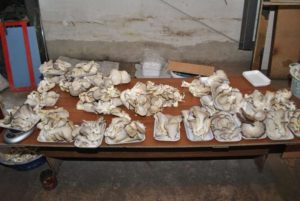
Based on the above information, it can be understood that growing mushrooms in the basement is not such a difficult task. It is important in this matter to competently approach the organization of the process itself and the equipment of the room (basement). With the right lighting, temperature and timely watering, even amateurs without much experience can grow quality mushrooms. A well-prepared substrate and quality mycelium play a key role in mushroom growing. Mushroom farming is a great example of how a hobby can grow into a profitable business.

